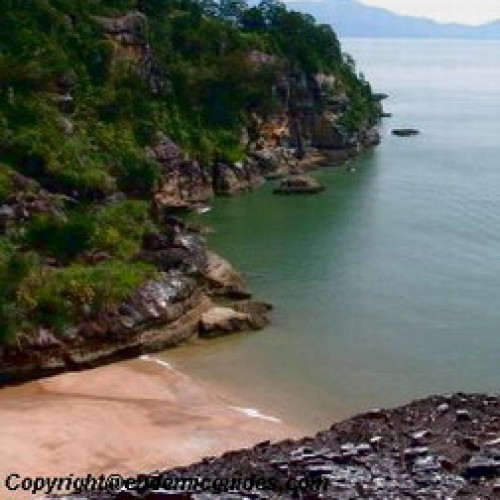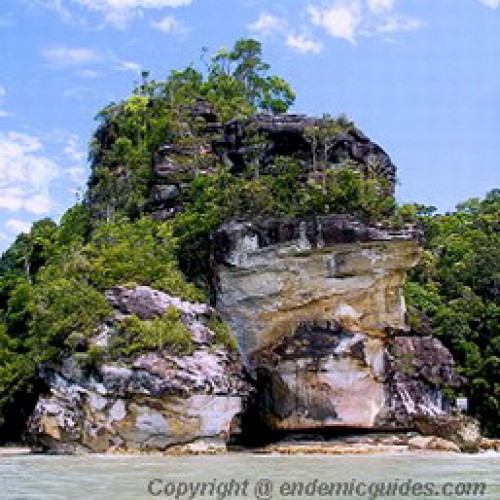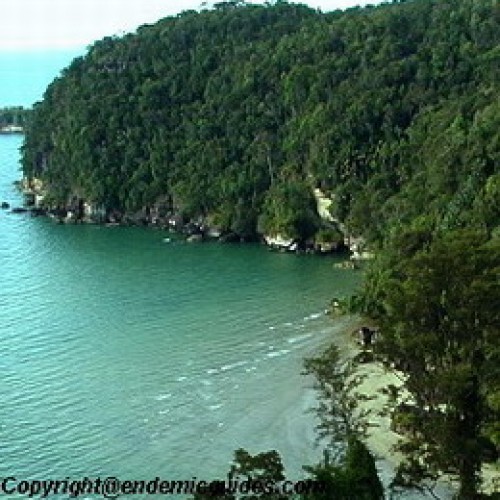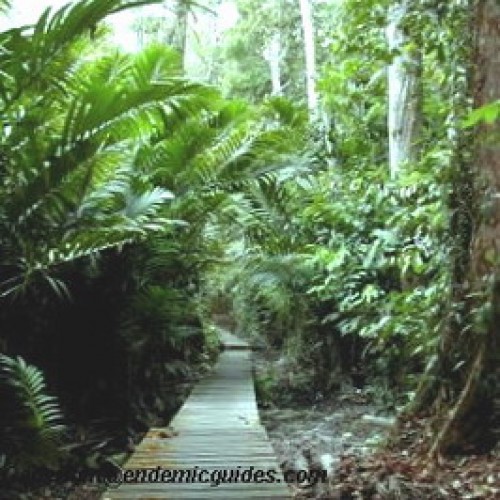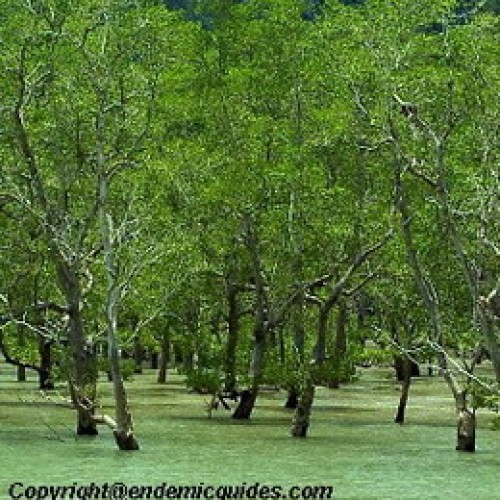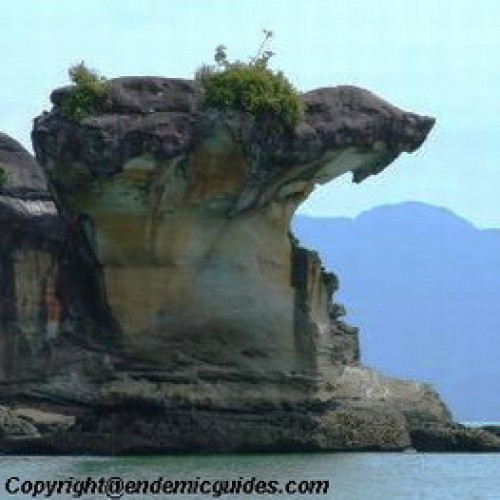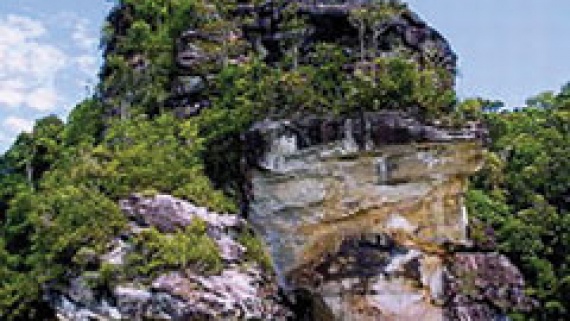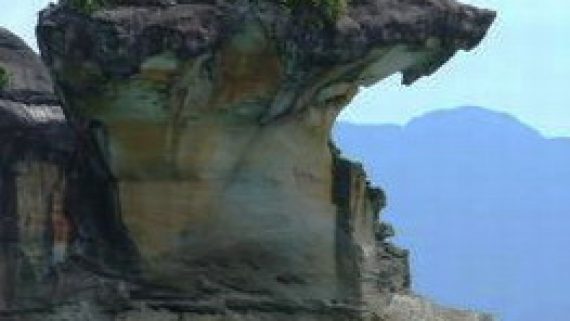Sarawak: Bako National Park
Introduction and history
The constant erosion over millions of years has turned Bako into a picturesque coastline of steep cliffs, rocky headlands and many stretches of sandy bays and coves. The erosion caused by constant waves at the base of cliffs has carved sea arches and sea stacks. Beautiful sandstone formations featuring pink and iron patterns on cliff faces can be seen along most of the coastline.
Declared a protected area on May 1st, 1957, Bako is Sarawak’s oldest national park covering an area of 2,727 hectares at the tip of the Muara Tebas peninsula. It is one of the smallest national parks in Sarawak, yet one of the most interesting as it contains almost every type of vegetation found on Borneo Island along with a rich variety of wildlife.
With a well maintained network of trails, Bako National Park has something for everyone. Experience this unique environment through anything from easy day hikes to tough multi-day jungle treks!
Flora and Fauna
Bako contains an incredible variety of plant species and vegetation types that add natural wonder of the park. While visiting Bako, it is possible to see up to 25 distinct types of vegetation from seven different eco-systems. These eco-systems include: Beach Vegetation, Cliff Vegetation, Kerangas or Heath Forest, Mangrove Forest, Mixed Dipterocarp Forest, Padang or Grasslands Vegetation, and Peat Swamp Forest. It is easy to explore these eco-systems via the jungle trails and take-in the different colors, shapes and sounds. Start your exploration at the Park Office in Telok Assam to get a sneak preview! Surprises are found around every bend such as strange carnivorous plants including pitcher plants, sundews, and bladderworts.
With its long history as a protected area, Bako is a wildlife hotspot. Visitors, especially those who stay overnight, have countless opportunities to observe and photograph wildlife.
Bako is home to approximately 150 rare proboscis monkeys, found only in Borneo. They are mostly arboreal (tree-dwelling), moving about the forest or mangroves in small groups and feeding on young leaves, shoots, sour fruits and seeds. The largest mammal found in Bako is the Bornean Bearded Pig. As its name implies, it is distinguished from other wild pigs by prominent bristles on either side of its snout. A number of lizards and snakes are also found at Bako, most of which are harmless. Bako is also a fascinating place for bird watching. The nocturnal creatures in Bako include the flying lemur, pangolin, mouse deer, various bats, tarsier, slow loris and palm civet. Day or night, the jungle is full of life.
Attraction and Activities
Bird watchers have recorded over 150 bird species in Bako including two types of Hornbills, the state bird of Sarawak. In addition to the residents of the region, Bako is also a fantastic place for observing migrant birds.
Bako’s extensive trail system is made up of 16 colour-coded jungle trails, which offer a range of walking and hiking options. The fit and adventurous can opt for full-day jungle hikes or overnight camping expeditions, while those who prefer to take it easy can opt for a relaxing forest walk.
Teluk Assam is near the Park Office and is a great place for spotting wildlife. Long-tailed macaques, silver leaf monkeys, common monitor lizards, plantain squirrel, bearded pigs and mouse deer are all found here. Telok Assam is also an excellent bird watching location.
A short but steep climb through cliff vegetation, it takes about 30 minutes to reach Tanjung Sapi. You will be rewarded with excellent views of Telok Assam, the South China Sea and Santubong!
From the Park Office, it takes about two and a half hours or 45 minutes from the Tajor junction to reach Tanjung Rhu. This trail branches off the Tajor trail and leads across open country to the rocky peninsula and a small headland where you can see a wave-cut natural platform and natural rock pools.
It takes about an hour passing through a cliff forest before you reach the small secluded beach of Telok Paku. Proboscis monkeys are often seen during seen during the early morning or late afternoon. Move slowly, keep as quite as possible and listen out for strange grunts or movements in the canopy.
Telok Delima is one of the best areas in the park for spotting proboscis monkeys and is only 45 minutes from the Park Office. As the Lintang trail bears right and climbs a hill, you are in prime proboscis territory. Listen out for strange grunting noises or the crash of vegetation. If you hear something, stop and be as quiet as possible. Scan the forest and try to observe where the strange noises come from. If you are lucky, you may see a harem of proboscis monkeys.
The one and half hour trek to Telok Pandan Kecil is one of Bako’s most popular. It ascends the forested hills overlooking Telok Assam, reaching the plateau covered in scrub vegetation and continues along a sandy path lined with carnivorous pitcher plants before reaching a cliff top with stunning view of the secluded bay below the famous sea stack just offshore. A 10 minutes descent through cliff vegetation brings you to one of the beaches in the park where you can swim. While swimming, watch out for monkeys who steal unguarded bags. The Telok Pandan Besar trails ends at a cliff top with views of the beach.
From the Park Office, it takes about three and half hours to reach the end of the Telok Sibur trail. First, follow the Tajor trail to the waterfall. Continue along the main trail for another 45 minutes until you reach a junction and the beginning of the Sibur trail. After a very steep 45 minutes descent, a walk through the mangrove and a wade across a river, you will finally reach the longest beach in Bako.
This is Bako’s long distance trail. It takes six or seven hours from the Park Office to reach the small beach at Telok Limau. You pass through rich rainforests, scrub land and swamp forests, cross small stream and climb a number of hills with excellent views of the whole Muara Tebas peninsula. You can camp at Telok Limau and return the next day, or arrange for a boat to pick you up.
Even though the trail is far from Park Office, the Telok Keruin trail is still being used. It is usually done as a side trek from Telok Limau. The first section is a 15-20 minutes climb through the forest until you reach a scrub section, then trek for another 25 minutes before you reach the Telok Keruin trail. Shortly after the junction, the trail descends to an area of scrub vegetation. Look out for pitcher plants that line the side of the trail. There are four short side-trails which lead to the Bukit Keruin lookout, a small rock pool, the Muara Tebas lookout point and the Tanjung Keruin and Tanjung Po viewpoints. The last section of the trail is a very steep descent into a mangrove forest. The trail then continues through the mangroves. Look out for the marks on the trees that show the way to the deserted beach, one of the best in the park.
To reach Ulu Assam, head through the swamp forest and a flat section where proboscis monkeys are sometimes seen. At the ‘Beware of the Bees’ sign, the trail climbs steeply and at times you must hang on to tree roots to keep your balance. At the top, you are rewarded with breathing views of Bako’s coastline.
Ulu Serait is deep inside the park and the trail passes through scrub, padang vegetation and swamp forest. From the Lintang junction to the base of Bukit Gondol, is about an hour and a half. This trail connects the Lintang trail with the Bukit Gondol hill walk.
This trail takes about an hour and a half and ends at the park boundary. It is not frequently used and is somewhat secluded. It’s a good place for seeing some of Bako’s rainforest giants.
From the Park Office, it takes about two and half hours to reach the waterfall. The Tajor passes scrub and padang vegetation and ends with a steep climb down to a small beach. The trail also passes the Tajor Waterfall, a popular resting spot. The waterfall is quite small but it has a beautiful jungle setting and a small dip pool.
This semi-circular loop trail passes over Bukit Gondol: the highest point in Bako at 260 meters. From the top of the hill, there are excellent views of Pulau Lakei and Muara Tebas. The loop trek takes about 45 minutes.
This trail connects Bukit Gondol with Tajor and passes some mighty rainforest giants. It passes along the slopes of Bukit Keruing, the second highest point in Bako. From Paya Jelutong to the Tajor Waterfall takes about an hour and a half.
This trail is actually a short cut for those who do climb Bukit Gondol. Although it is a very short trail, it offers the opportunity of seeing a fresh water swamp forest. The most dominant species in the area is Jelutong (softwood used for making pencils).
This small island has a superb white sand beach. The National Parks Department has a small guardhouse located on the island. Trips to the island can be arranged with local boatmen. There are some mysterious rock paintings just a short walk from the beach.
Getting there and away
From Kuching, take a taxi or a Petra Jaya Bus No. 6 to Kampung (village) Bako. The journey takes approximately 45 minutes. Continue on a 30-minute boat ride to the Park. Boats can be chartered at the terminal and they are operated by the local village. Permits and accommodation reservations can be acquired at the National Parks Booking Office in Kuching. Local tour operators also organize trips to Bako.
Bako National Park Contact Number:
Tel No: (6) 011 – 225049
Note: Book a return boat journey immediately after you arrive at the Park. Be prepared for hot and humid weather. Fishing is not allowed in the Park.

